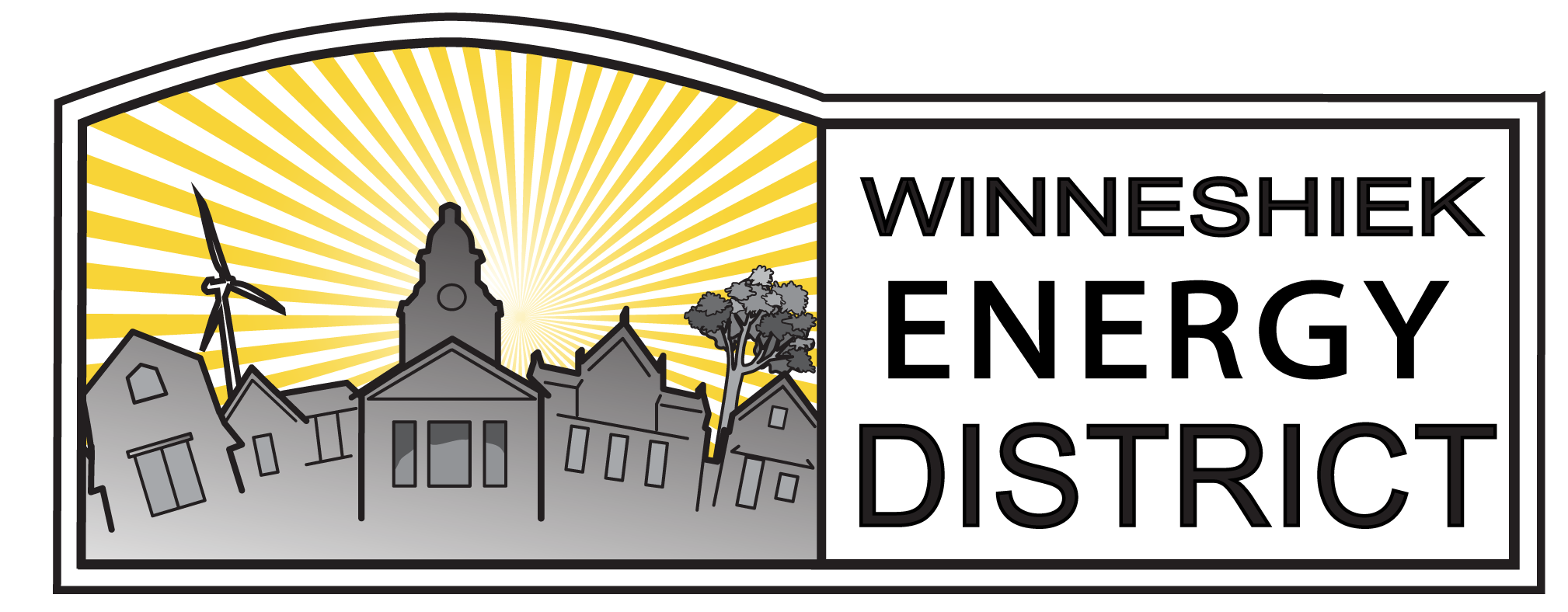Decorah Partnership Trades Solar Carbon LOCALLY
Decorah is on the map again for efforts in sustainable energy and climate change.
This time the focus is not on the renewable energy itself but on the “solar renewable energy credits” (or SRECs) associated with the solar energy produced. SRECs are a form of carbon (or greenhouse gas emissions) trading, and though it’s a relatively new idea to Americans, even the Super Bowl is now involved.
“The local trading of solar renewable energy credits in Decorah appears to be the first such project in Iowa” according to Nathaniel Baer, Energy Coordinator for the Iowa Environmental Council. “It demonstrates the leadership on sustainable energy in Decorah and is an innovative way to develop clean energy like solar PV. Renewable energy keeps dollars local, and keeping related assets such as carbon credits local adds even more value to that local power.”
The project is a partnership between Luther College, Winneshiek Energy District, and Decorah Bank and Trust. Luther’s solar field on the north side of Pole Line road (next to the Bus garage) is the largest in Iowa. It generates enough electricity to entirely power Baker Village. “We’re thrilled with the project, it’s a great investment for Luther and its production is right on target,” says Professor Jim Martin-Schramm who helped coordinate the project.” Luther is using the SREC sales revenue to offset some of the costs associated with leasing the equipment from Decorah Solar Field, LLC.
The field generates more than just electricity though, according to the Energy District’s Andy Johnson. “Every kilowatt hour of electricity produced by solar replaces a kilowatt hour produced with fossil fuels from the grid, which means it also replaces the greenhouse gas emissions (mainly carbon dioxide) that come with that grid electricity. The amount of emissions reduced can be quantified as carbon offsets.” The sale of those offsets, or credits, can help finance the renewable energy project itself.
And this is where Decorah Bank and Trust comes in. The bank has focused on energy and sustainability for years: its main building has earned Energy Star status for efficiency, and the roof is already covered with solar panels. “Even with all that progress”, says Joe Grimstad, Co-President and COO, “we still have a significant carbon footprint through the energy we consume. Purchasing these renewable energy credits from the Luther field through the Energy District helps us to lower that carbon footprint, and our climate impact, even further”.
“The Energy District’s role in this case is essentially as a broker” says Johnson. “We established the first local carbon offset program in the Midwest back in 2010. It supports our household efficiency programs, especially the work our Green Iowa Americorps team is doing. They’ve helped close to 300 households save $385,000 in energy costs over the lifetime of the products and practices, and they just get better and better.”
Luther could have worked toward an agreement directly with the bank, according to Martin-Schramm, but carbon trading is a fairly new concept and can be a complicated process. “The Energy District’s existing program turned out to be a good fit for the project. We’re happy that the benefits of our solar field will reach beyond Luther, and support energy savings for local households.”
Grimstad concurred, saying the project is a win-win all round. The Bank has been a major purchaser of the Energy District’s carbon offsets, or “Oneota Tags” since 2010. The emissions reductions from those previous offset purchases have come from the efficiency improvements with homeowners. This project is a continuation of the Bank’s community betterment and carbon footprint commitments, wrapped into one.
All parties involved stress that carbon trading of any form should be a “last step” to reducing a home, business, or institution’s carbon footprint. The Energy District’s website creatively suggests a priority for action:
- First REDUCE your energy consumption through cost-effective efficiency measures
- Second, consider RENEWABLE energy options such as biomass for heating, solar for hot water or electricity, or geothermal and air source heat pumps
- And lastly, when you’ve lowered your carbon footprint as much as possible and want to purchase carbon offsets, RECYCLE your dollars locally with the District’s Oneota Tags
Carbon footprints and carbon offsets should never be the focus of addressing our energy and climate challenges, says Johnson, but they are certainly something you’ll be hearing more about. “Even the organizers of this year’s Super Bowl are offering fans the opportunity to purchase carbon offsets to reduce the impact of their air travel to and from New Orleans! If you’re going, however, and want an even better local option … you know who to call.”
For more on the Energy District’s Oneota Tag Carbon Offset Program: https://energydistrict.org/programs/oneota-tag-offsets/
More on Decorah Bank and Trust’s sustainability efforts: http://www.decorahbank.com/sustainability-commitment/
More on Luther’s solar energy: http://www.luther.edu/sustainability/energy/solarpower/bakersolar/
More on the Super Bowl carbon offset program: https://entergygeauxgreen.c2es.org/offset-your-travel
